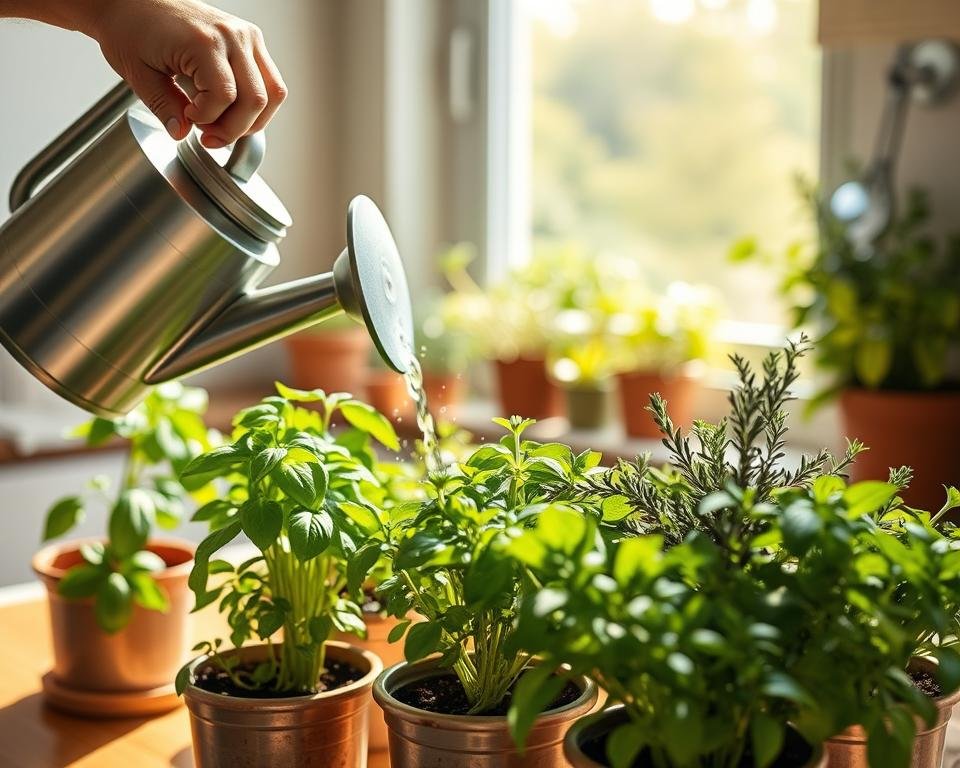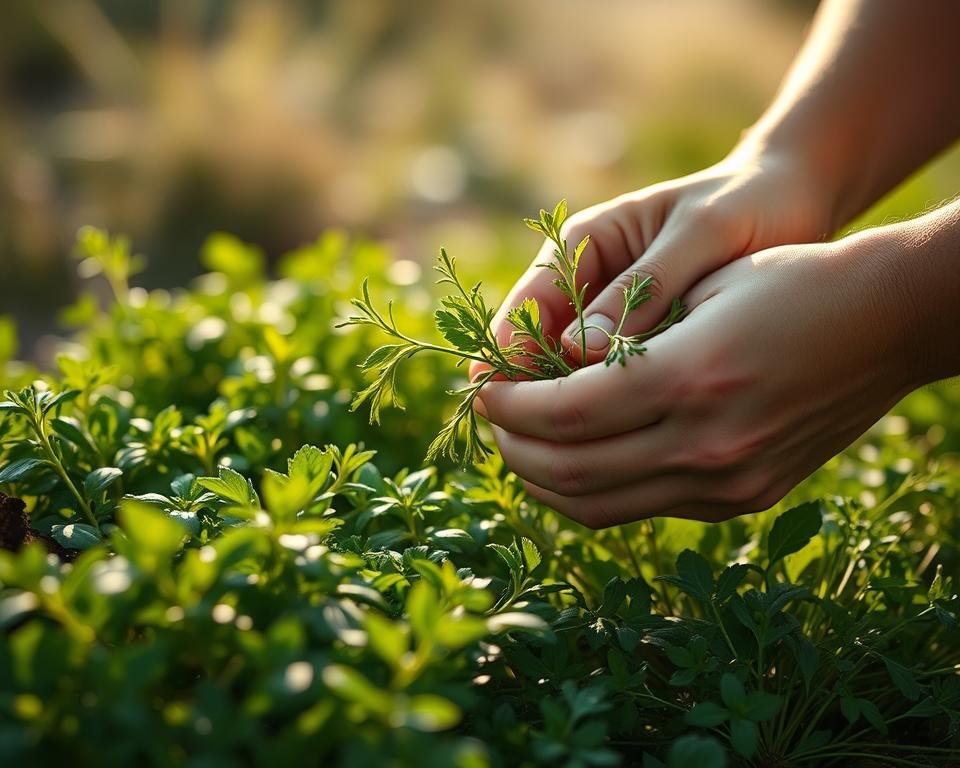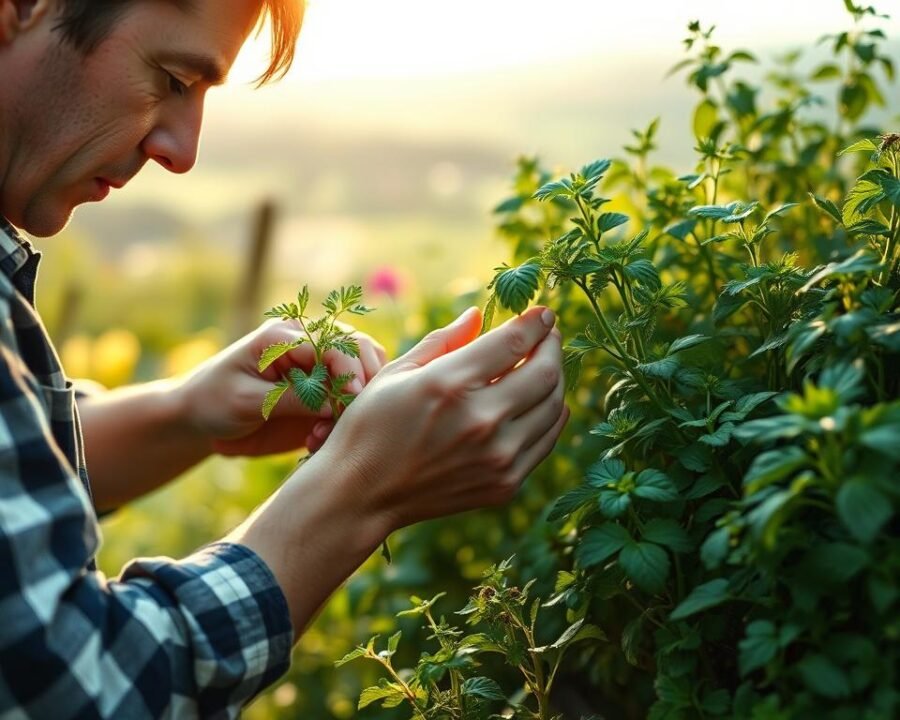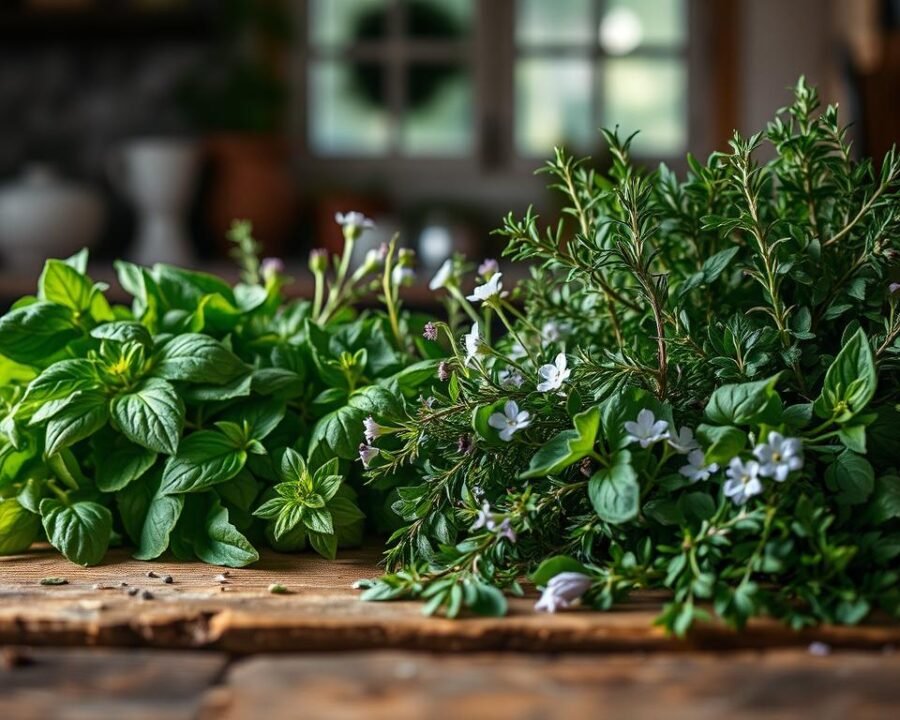Learn How to Grow Herbs in Plants Everyone Is Using with Us
There’s something magical about snipping fresh herbs from your own garden or windowsill. The aroma alone transforms meals, turning simple dishes into culinary delights. Whether you’re a seasoned cook or just starting, fresh herbs elevate flavors effortlessly.
No need to rely on store-bought bundles that wilt too soon. With a little care, you can enjoy vibrant plants year-round. Many varieties thrive indoors, making them perfect for small spaces or chilly winters.
Beyond taste, homegrown options save money and reduce waste. Imagine stepping outside (or into your kitchen) to grab what you need—no last-minute grocery runs required.
Key Takeaways
- Fresh herbs enhance meals with bold, natural flavors.
- Indoor plants provide year-round access to homegrown ingredients.
- Growing your own saves money compared to store-bought options.
- Many varieties adapt well to both indoor and outdoor spaces.
- With minimal effort, you can enjoy a continuous supply.
Why Grow Herbs Indoors?
Winter doesn’t have to mean bland dishes or empty shelves. With herbs indoors, you get fresh flavors even when gardens sleep under snow. No more wilted supermarket bundles—just vibrant leaves ready to transform meals.
Beyond taste, these green wonders brighten your home. Fragrant mint or thyme doubles as aromatherapy, lifting moods during short, cold days. Studies show indoor greenery reduces stress by 15%.
Compare store-bought to homegrown, and the savings speak for themselves:
| Store-Bought | Homegrown | |
|---|---|---|
| Cost per year | $250+ | $100 |
| Flavor potency | Mild (dried) | 3x stronger (fresh) |
| Lifespan | 1 week | Year-round |
Tender perennials like lemon balm survive harsh weather inside. Parsley and basil thrive on sunny windowsills, cutting grocery trips. Fresh herbs make dishes pop—think pesto or garnishes—with zero waste.
Start small. A single pot of rosemary pays for itself in two months. Soon, you’ll wonder why you ever relied on store shelves.
Choosing the Right Herbs for Your Space
Not all greens thrive equally—some flourish indoors while others struggle. Matching varieties to your environment ensures lush growth and fewer headaches. Let’s explore the best picks and pitfalls to avoid.
Best Herbs for Beginners
Start with forgiving options like basil, which sprouts quickly and rewards patience. Its bright leaves work in salads, pastas, and more.
Mint thrives with minimal fuss, though it spreads aggressively. Keep it in check with regular trims.
Thyme outperforms many in low light, making it ideal for dimmer spaces. Its earthy flavor enhances soups and roasts.
Herbs to Avoid Indoors
Rosemary often falters inside due to poor air circulation. Powdery mildew plagues its needles without steady airflow.
Skip sweet bay unless you’re committed. This slow-grower takes years to yield harvestable leaves.
Aggressive Growers: Mint and Lemon Balm
Mint creeps via underground runners. Confine it to pots and prune every 10–14 days to prevent takeover.
Lemon balm needs wide containers for its territorial roots. Its citrusy scent is worth the extra space.
- Prioritize fast growers like basil for instant gratification.
- Dodge rosemary indoors unless you’ve got strong airflow.
- Pair thyme with oregano—it tolerates shade better.
Lighting Needs for Healthy Herbs
Bright, healthy leaves start with the right light—here’s how to nail it. Most varieties crave 4–6 hours of daily sun to develop robust flavors. Without it, stems stretch weakly, and flavors fade.
South- or West-Facing Windows: Full Sun Herbs
Position oregano and sage in south-facing spots for 8+ hours of direct light. These varieties thrive under intense rays, producing oils that intensify taste. Rosemary and basil also excel here.
North- or East-Facing Windows: Shade-Tolerant Herbs
Mint needs just 3 hours of gentle morning light from east windows. Pair it with thyme, which tolerates dimmer corners. Avoid placing sun-lovers like lavender here—they’ll grow spindly.
Using Grow Lights in Winter
When days shorten, grow lights bridge the gap. Opt for full-spectrum LEDs on 12–14-hour timers. Keep them 6–12 inches above leaves to prevent bleaching. Leggy growth signals urgent need for more light.
| Herb | Ideal Light | Signs of Stress |
|---|---|---|
| Basil | 6–8 hours direct sun | Yellowing leaves |
| Parsley | 4–6 hours filtered light | Slow growth |
| Thyme | 3–4 hours east window | Woody stems |
Scorched leaves? Move pots back from hot south-facing glass. Rotate plants weekly for even exposure. With these tweaks, you’ll harvest vibrant flavors year-round.
Selecting the Perfect Containers
Healthy roots start with smart container choices. The right home for your greens ensures vigorous growth and bold flavors. Let’s explore how to match pots to your plants’ needs.
Pot Size and Depth for Root Health
Parsley’s taproot needs 8-inch-deep pots, while thyme thrives in 6-inch ones. Oversized containers trap moisture, risking rot for slow-growers like sage. Always check your variety’s root spread before planting.
Why Wide-Mouth Pots Work for Mint
Mint’s surface runners demand shallow, wide-mouth planters—12 inches across stops takeover. Unglazed terra cotta helps prevent waterlogging. For vacations, self-watering containers keep soil evenly damp.
Avoiding Overcrowded Herb Kits
Those cute herb kits? Their pots are 40% too small for mature plants. Upgrade to larger containers within two weeks to prevent stunted growth. Here’s how to spot trouble:
- Roots circling the bottom signal urgent repotting
- Yellow leaves often mean cramped quarters
- Choose wide-mouth designs for easy harvesting
With the right foundation, your greens will reward you with endless flavor. Start small, but think big about space needs.
Soil and Potting Mix Essentials
Great flavors start beneath the surface—your soil holds the secret to vibrant, aromatic greens. The right organic mix delivers steady nutrients while keeping roots happy. Skip generic garden dirt; tailored blends prevent soggy roots and flavorless leaves.
For a foolproof blend, combine 60% potting soil, 30% compost, and 10% perlite. This trio balances moisture retention and drainage. Potting mixes with perlite prevent compaction, letting roots breathe. Worm castings add slow-release nitrogen—no synthetic fertilizers needed.
Refresh the top 2 inches of soil monthly. This simple trick replenishes nutrients without disturbing roots. Over-fertilization? Bland leaves reveal excess salts. Winter demands restraint—skip additives to intensify natural flavors.
| Ingredient | Role | Best For |
|---|---|---|
| Compost | Nutrient boost | All leafy varieties |
| Perlite | Aeration | Basil, mint |
| Vermiculite | Moisture control | Parsley, cilantro |
Repot annually to prevent dense, suffocating soil. Roots circling the pot’s base scream for space. Upgrade containers by 1–2 inches each time. Your greens will thank you with bold, uninterrupted growth.
- Mix 60% potting soil, 30% compost, 10% perlite
- Top-dress monthly for sustained nutrients
- Avoid winter fertilizers—flavors sharpen naturally
Watering Your Herbs the Right Way
Proper hydration keeps greens vibrant and flavors bold. Too much or too little water stresses plants, dulling their taste and texture. Learn to read your greens’ needs—they’ll reward you with lush growth.

Checking Soil Moisture: The Finger Test
Skip guesswork with the 2-knuckle rule. Push a finger into the soil up to the second joint. Dry? Time to water. Damp? Wait a day. This simple trick prevents overwatering, the #1 killer of potted greens.
Herbs That Prefer Dry Soil
Oregano and sage thrive on neglect. Let their soil dry completely between drinks—every 10–14 days. Overwatering invites root rot, while slight drought intensifies their earthy oils.
Mint’s Thirst: Keeping It Hydrated
Mint’s thirst demands attention. Water when the top ½ inch dries out, typically every 5–7 days. Use *room-temperature water* to avoid shocking its delicate roots. Bottom-watering ensures even soil moisture without soggy leaves.
| Herb | Watering Frequency | Signs of Thirst |
|---|---|---|
| Oregano | Every 10–14 days | Leaves curl slightly |
| Sage | Every 12–16 days | Grayish leaves |
| Mint | Every 5–7 days | Drooping stems |
- Yellow lower leaves? You’re overdoing it.
- For mixed planters, try a moisture meter for precision.
- Morning watering reduces evaporation loss.
Temperature and Air Circulation Tips
Keeping greens thriving requires more than just light and water—temperature and airflow play crucial roles. Aim for 50–60°F at night to deter pests naturally. Daytime warmth around 65–70°F mimics their ideal cool environments.
Stagnant air spikes disease risk by 70%. A simple oscillating fan running 6 hours daily strengthens stems and wards off mold. Position it 3 feet away for a gentle breeze that mimics outdoor conditions.
Dodge common pitfalls:
- Heat vents and drafty windows create harmful temperature swings
- Group greens to trap humidity—a $10 hygrometer tracks levels perfectly
- Pebble trays under pots boost local air circulation without overwatering
Microclimates matter. Basil enjoys slightly warmer spots, while mint prefers cool environments near sinks. Observe leaf responses—curling often signals distress.
| Issue | Fix |
|---|---|
| Weak stems | Increase air circulation with fans |
| Leaf drop | Stabilize temperature away from vents |
Pruning and Harvesting for Growth
Strategic cuts do more than shape plants—they boost flavor potency. Proper pruning encourages denser foliage while preventing leggy stems. Timing matters: morning harvests capture peak oils before heat diminishes aromas.
How Clipping Encourages Bushier Plants
Always clip just above leaf nodes where new branches emerge. This redirects energy sideways instead of vertically. For basil, remove top sets of leaves weekly to triple leaf production.

Sterilize shears with rubbing alcohol between plants to prevent disease spread. Aggressive growers like mint need weekly tip removal to delay flowering, which saps flavor.
Fresh vs. Dried Herb Ratios in Cooking
Dried concentrates pack more punch—use 1/3 the amount of fresh. One teaspoon of crumbled oregano equals a tablespoon of fresh leaves. Preserve surplus by hanging bundles in paper bags for 2–3 weeks.
- Cut stems after morning dew dries for maximum oil retention
- Convert recipes: 1 tsp dried = 1 tbsp fresh chopped
- Store dried leaves whole, crushing just before use
| Herb | Pruning Frequency | Fresh:Dried Ratio |
|---|---|---|
| Basil | Weekly | 3:1 |
| Thyme | Biweekly | 4:1 |
Seasonal Transitions: Moving Herbs Outdoors
Transitioning greens outside requires careful timing and technique. Sudden changes shock delicate roots, stunting growth. Gradually introduce them over 7–10 days to ensure robust adaptation.
Wait until nighttime temperatures consistently stay above 50°F. Early summer offers ideal conditions—longer daylight and stable warmth. Cold snaps? Keep row covers handy for unexpected dips.
Follow these steps for success:
- Start slow: Begin with 2-hour sessions in shaded garden spots, increasing daily.
- Monitor pests: Aphids love tender new growth. Inspect leaves closely for 14 days.
- Refresh soil: Mix compost tea into outdoor beds to replenish nutrients.
- Reverse in fall: Bring pots inside before the first frost to prolong harvests.
Morning sun is gentler than afternoon rays. Gradually expose greens to direct light to prevent scorching. By week two, they’ll thrive in their new summer home.
Troubleshooting Common Issues
Common issues can sneak up on thriving plants if left unchecked. Early detection and simple fixes keep flavors bold and growth robust. Let’s tackle three frequent challenges head-on.

Leggy Growth: Fixing Low Light Problems
Stretched stems and sparse leaves signal insufficient light. Move greens within 12 inches of a south-facing window or under grow lights. For severe cases, prune leggy basil by 75% to redirect energy.
Prevent future issues by rotating pots weekly. Weak stems strengthen with consistent, bright exposure. A timer ensures 14 hours of daily light during darker months.
Scorched Leaves: Too Much Sun
Crispy, brown edges mean harsh rays are damaging foliage. Relocate pots 3 feet back from windows or filter light with sheer curtains. Morning sun is gentler than afternoon beams.
Hydrate stressed plants with room-temperature water. Avoid fertilizing until new growth appears—recovery takes priority.
Overwatering and Root Rot
Soggy soil and mushy roots demand immediate action. Unpot greens, trim blackened roots, and replant in fresh, well-draining mix. A hydrogen peroxide solution (1:3 ratio with water) disinfects remaining healthy roots.
- Prevent repeats: Let soil dry slightly between waterings.
- Natural antifungal: Dust cinnamon powder on cut roots before repotting.
- Monitor: Yellow leaves often warn of overwatering.
Conclusion
Fresh flavors await when you master indoor gardening. With the right light, containers, and care, your herb garden thrives year-round. Start small with easy-grow varieties like mint, thyme, or parsley—their resilience builds confidence.
Rotate greens seasonally for endless harvests. Move pots outdoors in summer, then back inside before frost. Label pots with harvest dates to track peak freshness.
Join our community for tips and support. Share your progress and learn from fellow growers. Your herb garden journey starts now—one snip at a time.







